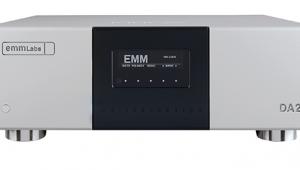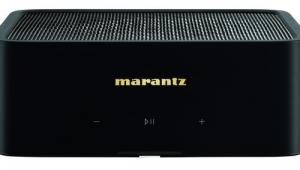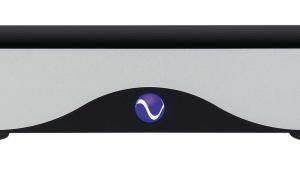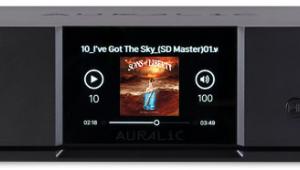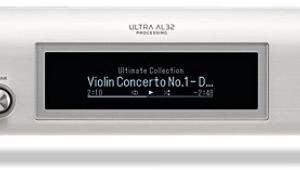Matrix Audio Element X Network Attached DAC

 This unit may be compact, but it's a highly comprehensive DAC/headphone amp/preamp, with full network audio capability encompassing a huge range of formats
This unit may be compact, but it's a highly comprehensive DAC/headphone amp/preamp, with full network audio capability encompassing a huge range of formats
Based in Xi'an, the ancient city in northwest China that's home to the famous Terracotta Warriors, Matrix Audio has a classic hi-fi backstory: it was founded by three audio/music enthusiast schoolmates who regrouped some years later to launch a company to develop and produce hi-fi separates. The DA-100plus DAC was its inaugural product in 2006 since which time the company has evolved its lineup to encompass a range of digital and streaming products that covers just about all the bases, from the X-Sabre Pro DAC [HFN Nov '17] to the new £2795 Element X.
The latter, a compact box – just 350mm wide and standing 60mm tall – is not only capable of driving a wide range of headphones, it can also be used as a source to feed conventional amplification or as a DAC/preamp, with variable output and the option of a 10dB boost if required. Multiple digital inputs are provided, and it supports everything from network streaming to MQA, Roon, 768kHz PCM and DSD1024 via an ESS ES9038Pro DAC. To put it mildly, it's pretty much future-proofed.
Walk This Way
It's possible to use this unit straight out of the box, whether as a DAC to feed your system, a streamer or a headphone amp. A large part in that is played by the company's MA Remote app, available free for both Android and iOS. While some manufacturers may follow the path of suggesting buyers use their products with readily-available third party apps, the Matrix Audio approach really shows the benefit of creating something bespoke.

Plug in the Element X and fire up the app on your phone or tablet, and it will walk you through network connection and set-up. After that you just need to point it to your network store – if that's what you'll be streaming from – using the app's 'Library' tab, or to a USB device (or even a tiny MicroSD card, if that's where you have your music), and then to any streaming services to which you wish to connect.
There is an even easier way to control stored music and streaming services: use the Element X as a Roon endpoint. Yes, you'll need a computer running Roon Core, and a Roon subscription, which at the time of writing runs at $6.99 a month, or $699.99 for the lifetime plan. But you could always try the 14-day offer, which will allow you to see how you get on with it.
The Element X's front panel controls are no more than a power button, what looks like just a volume knob and a pair of further buttons, but this is an exceptionally flexible device, with all manner of user options selectable via a menu accessed by those two buttons and pushes and twist of the main control. For a start you can select inputs and outputs, the Element X DAC having two coaxial, two optical and an LVDS/I2S digital input, as well as a USB-B for computer connection and two USB-A host ports for storage devices.
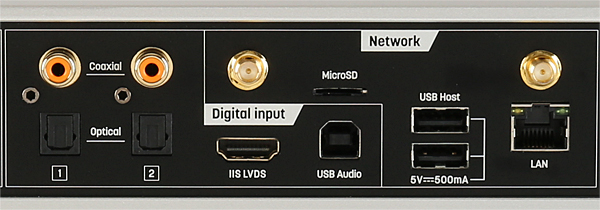
Seven Filters
As well as a choice of headphone outputs – two XLR/6.35mm combination sockets, and a further 4-pin balanced XLR output – you can also output analogue audio via either XLRs or RCA phonos, the amplification using four discrete channels to deliver true balanced working when required. All these options can be selected or disabled in the menu system, delving deeper into which reveals such niceties as seven digital filters, a choice of DSD low-pass settings, dither, 'jitter elimination', DPLL bandwidth for tackling shaky digital feeds, and headphone gain.
There's a lot in there, so it's handy that one of the two front-panel buttons, marked 'O', can be preset for quick access to a given set of functions: input or output selection, digital filters, or information shown on the display about the unit's hardware and software status. There's also a slimline remote to access basic functions including volume and input selection.
![]() Thrill Of It All
Thrill Of It All
After set-up and the inevitable over-the-air firmware update, the Element X was used with a variety of headphones – both balanced and single-ended – including the B&W P9 Signature [HFN Mar '17], Focal Spirit Pro [HFN Dec '15], the Oppo PM-1 [HFN Jul '14] and Philips Fidelio X3. I also used it into both integrated and power amplifiers, including the excellent Denon PMA-A110 [HFN Dec '20] which allowed me to make use of both fixed and variable outputs on the Element X, thanks to the integrated's power amp direct input.


